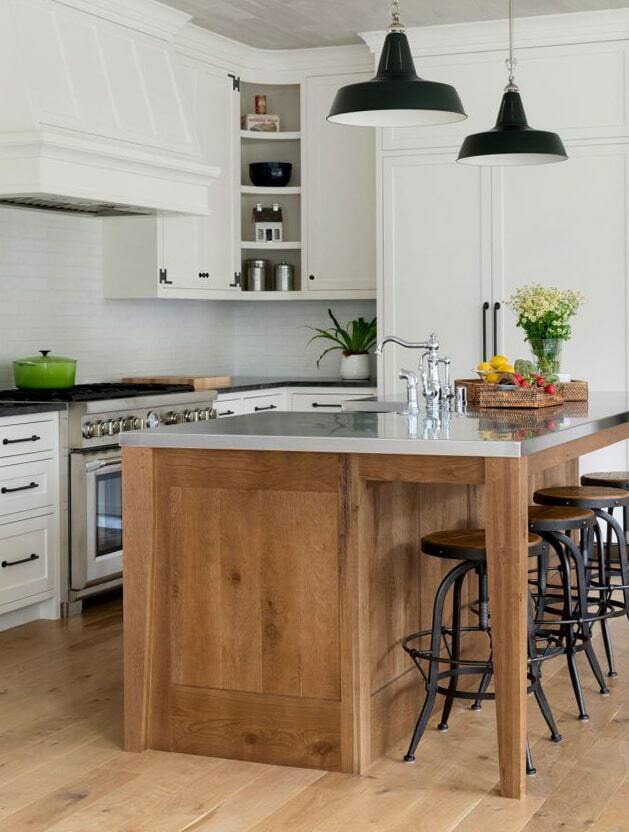A Comprehensive Guide to Picking the Right Kitchen Island Leg
A Comprehensive Guide to Picking the Right Kitchen Island Leg
Blog Article
The Significance of a Sturdy Kitchen Area Island Leg in Creating a Useful Cooking Location
A tough kitchen island leg serves as an essential part in establishing a useful food preparation environment, giving essential support for both the countertop and different cooking area tasks. As kitchens advance into multifunctional locations for food preparation, dining, and interacting socially, the choice of products and design factors to consider for island legs ends up being increasingly vital.
Advantages of Sturdy Island Legs
Offering necessary assistance, strong kitchen area island legs play a critical function in boosting the capability and durability of kitchen islands - kitchen island leg. These legs not just bear the weight of the countertop and any type of additional items positioned on the island, however also add to the general stability of the framework. A well-supported cooking area island ensures that it remains upright and useful, even under heavy use, which is especially vital in hectic kitchen environments
Moreover, sturdy island legs can enhance the aesthetic charm of the kitchen area. They give a solid framework that can enhance various style styles, from contemporary to conventional. This adaptability permits house owners to customize their kitchen islands according to individual taste while making certain that the architectural stability continues to be uncompromised.
In addition to their encouraging role, robust kitchen area island legs can also enhance safety. Ultimately, spending in sturdy kitchen island legs is crucial for a useful and visually pleasing cooking location.
Products for Kitchen Island Legs
When selecting products for kitchen island legs, toughness and aesthetic appeal are critical variables to think about,. The most typical products include hardwood, steel, and crafted timber, each offering one-of-a-kind advantages.
Hardwood, such as maple, oak, or cherry, is a traditional option due to its stamina and ageless beauty (kitchen island leg). It can stand up to significant weight and is immune to wear, making it optimal for high-use cooking area settings. Furthermore, hardwood can be stained or repainted to enhance numerous kitchen area styles
Steel legs, typically crafted from stainless-steel or functioned iron, supply a modern-day and commercial appearance. They are exceptionally strong and can sustain considerable lots while being resistant to wetness and heat, which is beneficial in a cooking location. Metal legs can likewise be conveniently cleansed, enhancing their usefulness.

Layout Considerations for Stability
The selection of materials for kitchen area island legs directly influences the layout factors to consider for stability. When developing a kitchen area island, it is vital to evaluate the weight-bearing capacity of the picked materials. Much heavier materials, such as solid timber or steel, commonly provide better security, particularly under the tension of day-to-day use.
Furthermore, the leg style have to include proper geometry to boost security. A bigger base boosts the support location, minimizing the danger of tottering or tipping. Factor to consider must also be provided to the elevation of the legs; out of proportion leg sizes can bring about inequality, endangering the general stability of the island.
In addition, the distribution of weight across the island is important. Making sure that the leg positioning straightens with the heaviest elements, such as kitchen counters and devices, will certainly even more enhance security.
Upkeep Tips for Durability

Depending on the material of the legs-- whether wood, steel, or composite-- appropriate cleansing techniques ought to be utilized. Steel legs might require a light polish to prevent rust and preserve their gloss.
Additionally, tightening screws and screws consistently can guarantee stability and prevent tottering. If the kitchen Get More Info island experiences hefty usage, think about strengthening the legs with extra braces or sustains to improve sturdiness. Finally, applying a protective coating or sealant can safeguard versus moisture and discolorations, lengthening the life expectancy of the legs. By complying with these upkeep tips, property owners can guarantee their kitchen island legs continue to be functional and robust for years to come.
Selecting the Right Leg Design
Regular maintenance makes sure that cooking area island legs continue to be functional and durable, yet picking the ideal leg design is just as essential for both visual appeals and assistance. The choice of leg style can significantly affect the overall design and consistency of your kitchen.

Capability is another vital element. Thicker legs or those with a tough base can support much heavier counter tops and devices, enhancing the island's energy. Conversely, slim legs might create an airy appearance, suitable for lighter layouts but potentially much less encouraging.
Final Thought
In recap, the value of tough kitchen island legs can not be overemphasized in the production of a functional food preparation location. These legs give important assistance, improve stability, and add to the general aesthetic of the cooking area. By carefully choosing appropriate products and designs, along with carrying out correct upkeep techniques, the durability and performance of cooking area islands can be made certain. Eventually, purchasing durable island legs is basic to achieving a efficient and safe culinary atmosphere.
A strong kitchen area island leg offers as an essential component in check my site establishing a useful cooking environment, offering required assistance for both the countertop and various cooking area tasks.Giving necessary assistance, sturdy kitchen island legs play a crucial duty in boosting the performance and sturdiness of cooking area islands. Eventually, investing in durable kitchen island legs is crucial for a practical and aesthetically pleasing cooking location.
Consideration should likewise be offered to the elevation of the legs; out of proportion leg lengths can lead to discrepancy, jeopardizing the general security of the island.
Wood legs provide heat and a classic look, while steel legs use a modern-day and industrial feel.
Report this page